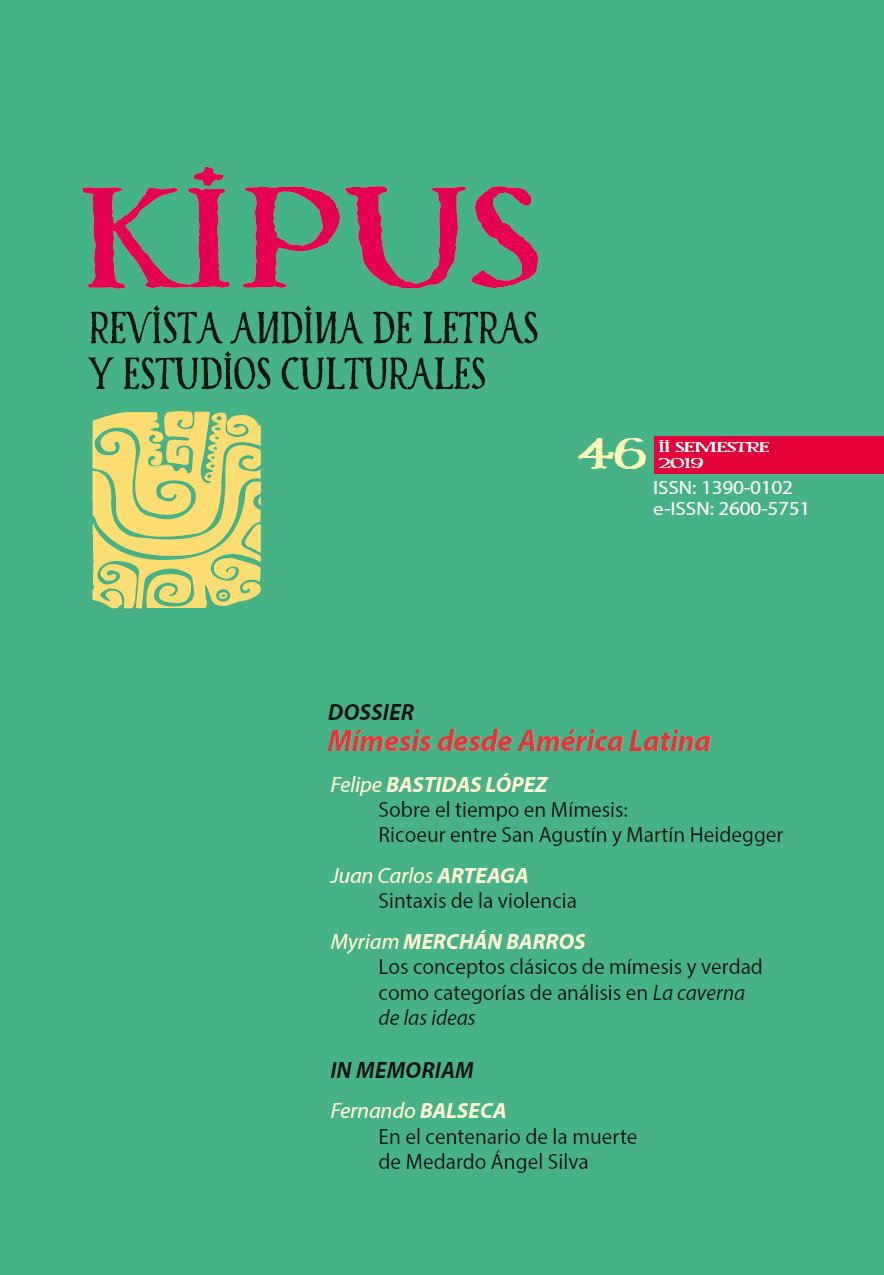Artistic vanguards and their desire: the aesthetic oscillation of a contradiction
DOI:
https://doi.org/10.32719/13900102.2019.46.6Keywords:
Pablo Palacio, Pablo Picasso, vanguard, contradiction, desire, object, mimesis, baroque, residual, oscilation, monsterAbstract
Our understanding of relations and social representations occurs in our recognition of their internal and external articulations and contradictions. An analysis of the artistic vanguards of the XXth century, must thus consider the conjuncture created by modern capitalism’s crisis which sparked its rivalry with the representations of high bourgeios art, in a dispute for reality and low art, under the perception that reality may be transformed in the search for absolute progress and abundance –objects of modern desire–. The literature of Pablo Palacio and Pablo Picasso’s painting illustrate the link between artistic vanguards and modern bourgeois art, in their identification with the same objects of desire and the coexistence of opposites in this historical unity, demonstrating the contradiction of the avant-garde revolution and its modern “utopic spirit”.
Downloads
References
Lista de referencias:
Palacio, Pablo. 2000. “Las mujeres miran las estrellas”. En Obras completas, 25-8. Madrid: ALLCA XX.
–––. 2000. “La doble y única mujer”. En Obras completas, 33-42. Madrid: ALLCA XX.
–––. 2000. Vida del ahorcado (novela subjetiva), 143-84. Madrid: ALLCA XX.
–––. 2015 [1933]. “Correspondencia”. En Carlos Manuel Espinosa, Correspondencia 1930-1972; 242-247. Loja: Casa de la Cultura Ecuatoriana, Núcleo de Loja.
Referencias secundarias:
Adorno, Theodor, y Max Horkheimer. 1969. La dialéctica del iluminismo. Buenos Aires: Editorial Sudamericana.
Althusser, Louis. 1981. La revolución teórica de Marx. Ciudad de México: Siglo XXI Editores.
Bürger, Peter. 2010. Teoría de la vanguardia. Buenos Aires: Las Cuarenta.
Cevallos, Santiago. 2006. “Hacia los confines”. En VV.AA., La cuadratura del círculo. Cuatro ensayos sobre la cultura ecuatoriana, 119-88. Quito: Corporación Cultural Orogenia.
–––. 2010. Las estéticas de Jorge Icaza y Pablo Palacio bajo el signo de lo barroco y lo cinematográfico. Quito: Universidad Andina Simón Bolívar, Sede Ecuador / Abya-Yala / Corporación Editora Nacional.
–––. 2012. El barroco, marca de agua en la narrativa hispanoamericana. Madrid: Iberoamericana Vervuert.
Eagleton, Terry. 2003. “Hacia una ciencia del texto”. En Textos de teorías y críticas literarias, compilado por Nara Araújo y Teresa Delgado, 557-65. Ciudad de México: Universidad Autónoma Metropolitana.
Echeverría, Bolívar. 2001. Las ilusiones de la modernidad. Quito: Tramasocial.
Fernández, María del Carmen. 1991. El realismo abierto de Pablo Palacio en la encrucijada de los 30. Quito: Libri Mundi.
Girard, René. 1998. La violencia y lo sagrado. Barcelona: Anagrama.
Ortega y Gasset, José. 1994. “La deshumanización del arte”. En La deshumanización del arte, 11-54. Madrid: Alianza.
Ricoeur, Paul. 2000. Del texto a la acción. Buenos Aires: Fondo de Cultura Económica.
Subirats, Eduardo. 1997. Linterna mágica. Vanguardia, media y cultura tardomoderna. Madrid: Siruela.
Terán Ávalos, Sebastián. 2016. “Racionalidad geométrica en Vida del ahorcado (novela subjetiva) de Pablo Palacio: alucinamiento en modernización”. Tesis de maestría, Universidad Andina Simón Bolívar, Sede Ecuador.
Žižek, Slavoj. 2005. El sublime objeto de la ideología. Buenos Aires: Siglo XXI Editores.
Downloads
Published
How to Cite
Issue
Section
License

This work is licensed under a Creative Commons Attribution-NonCommercial-ShareAlike 4.0 International License.







.png)
